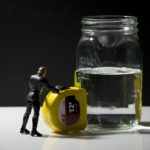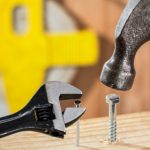New opportunities blossom for former car suppliers
First 5000 | October 24, 2017

October 22nd saw the end of over 60 years of mass market car making in Australia as the last vehicle rolled off the GM Holden assembly line in Elizabeth, 26 km north of Adelaide. Once a mainstay of the national economy, the automotive sector has shrunk in recent years with the withdrawal of government subsidies and changing consumer tastes. Ford and Toyota pulled out last year and General Motors will produce its next line of foreign made vehicles in Germany at more advanced and highly automated plants.
Domestic car sales have increased, rather than slumped, thanks to rising incomes and low interest rates, but the fact that the last car off the line was a red VF Commodore was significant. This type of six-cylinder, rear-wheel drive sedan was once a mainstay of the Australian market, but car buyers have flocked to sports utility vehicles and small, economical hatchbacks in recent years. Altough few will ever see a dirt road, 40,000 SUVs were sold in June alone, dwarfing sales of the large saloon cars for which Holden and Ford were once famous.
Holden had secured half the fast growing domestic car market by 1958, just a decade after the first FX left the factory gates, but the brand thrived in an era of high tariffs on imported cars. Post war protectionism encouraged foreign manufacturers, including Nissan, Mitsubishi, Chrysler and Leyland as well as the more recently departed Ford, Toyota and General Motors, to set up their own plants here rather than any particular Australian affinity for car making. Once hefty import tariffs have been progressively reduced since the Hawke-Keating reforms of the 1980s and bilateral free trade deals with the United States and Japan and the emerging car manufacturers of China, South Korea, Thailand and Malaysia meant that only hefty government subsidies kept Australia’s car plants ticking over.
Over $7 billion has been doled out to major car making firms since 2001 and the withdrawal of subsidy, combined with what the Prime Minister called a ‘perfect storm’ of other factors doomed the domestic industry. The mining boom has kept the value of the Australian dollar high, making Australian car exports more expensive and imports of more attractive foreign cars cheaper, while domestic labour costs remained higher than Asian competitors. Australia itself is a small car market and declining loyalty to domestic brands reduced its significance still further in a vast and highly competitive global market.
Just as their workers must find new jobs, so the dozens of mid-sized suppliers of components and accessories which depended on the giant car plants have been forced to reinvent themselves or go out of business altogether. Although the Prime Minister conceded that “the end of Holden making cars in Australia is a very sad day for the workers and for every Australian” at a recent press briefing, he underlined the opportunity to shift jobs and skills towards the defence industry, given his plans to boost ADF spending by nearly $30 billion over the next five years. New frigates and submarines for the Navy and armoured fighting vehicles for the Army will all be built in South Australia, offering a new outlet for the state’s advanced manufacturing skills.
The response of other states to the loss of their own car plants shows a range of possibilities for former automotive suppliers beyond defence. Although the Coalition’s energy policy has seen more twists and turns than Hampton Court Maze, one Victorian manufacturer has made a successful transition from fossil fuel consuming cars to producing solar energy.
Heuch once produced engineering systems for Toyota, Holden and Ford but looked for other options as the long decline of domestic manufacturing neared its point of no return. The closure of Dandenong’s car plants hit at least 30 local suppliers and threatened 3385 jobs, but Heuch anticipated the collapse by launching a solar spin-off company, Black Stump Technologies, and retraining a quarter of its workforce in this new field. Its electricians are now solar qualified and the firm now develops solar-powered refrigeration and energy technologies for remote areas, disaster zones and mining and construction sites to power clean water, food hygiene, sanitation and medical storage. The company was helped by funding from the Accelerating Commercialisation Grant programme and is now looking to hire more staff for its retooled manufacturing unit.
The Victorian example offers hope for mid-sized firms in South Australia and elsewhere hit by Holden’s closure and underlines the importance of an agile and forward thinking approach in a fast changing economic environment. No company should mistake its product for its business, and skilled engineering and manufacturing firms must take every opportunity to transition their expertise from the industries of the past to those of the future.




